
Media International Australia
Scope & Guideline
Connecting Research and Real-World Media Dynamics
Introduction
Aims and Scopes
- Cultural Analysis of Media Practices:
The journal frequently explores how media representations shape and reflect cultural identities, particularly in relation to gender, ethnicity, and sexuality. - Impact of Digital Media:
There is a strong emphasis on the effects of digital media and technology on communication practices, including social media's role in shaping public discourse and community engagement. - Public Journalism and Media Ethics:
The journal addresses critical issues in journalism ethics, including the role of media in public health crises, misinformation, and the responsibilities of journalists in a digital age. - Political Communication and Activism:
Research often focuses on the intersection of media and politics, examining how media narratives influence political contexts and public engagement in activism. - Indigenous and Marginalized Voices:
The journal prioritizes studies that highlight the media experiences of Indigenous peoples and other marginalized communities, advocating for representation and inclusivity. - Environmental Communication:
There is a significant focus on how media shapes perceptions of environmental issues, particularly in relation to climate change and public health.
Trending and Emerging
- Digital Activism and Social Movements:
There is a growing interest in how social media platforms facilitate activism and community engagement, particularly in the context of global movements such as Black Lives Matter and climate change advocacy. - Post-Truth and Misinformation:
Research increasingly addresses the challenges posed by misinformation and the post-truth era, focusing on how media narratives shape public perception and political discourse. - Health Communication in Crises:
The COVID-19 pandemic has spurred significant research on health communication strategies, examining how media can effectively communicate public health messages and combat misinformation. - Intersectionality in Media Representation:
An emerging focus on intersectionality highlights the complex ways in which various identities (e.g., gender, race, sexuality) are represented in media, advocating for more nuanced analyses. - Technological Impact on Communication:
The rise of new technologies, including AI and digital platforms, is a trending theme, with research exploring their implications for journalism, audience engagement, and ethical considerations.
Declining or Waning
- Traditional Broadcast Media Studies:
Research focused on conventional broadcast media, such as television and radio, appears to be declining as attention shifts towards digital platforms and their impact on audience engagement. - Print Journalism Analysis:
There is a noticeable decrease in studies specifically analyzing print journalism, likely due to the ongoing decline of traditional print media and the rise of digital journalism. - Local News Coverage:
While local journalism remains important, there is a waning focus on its specific practices and challenges, possibly overshadowed by broader discussions on digital media and global news. - Historical Media Studies:
The journal has seen fewer papers dedicated to historical analyses of media practices, suggesting a shift towards contemporary issues and the immediacy of current media landscapes. - Media Effects Research:
Research examining the direct effects of media on audiences, particularly in a psychological context, seems to be less prominent as the focus shifts towards more complex interactions between media and society.
Similar Journals
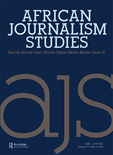
African Journalism Studies
Advancing the discourse of journalism across Africa.African Journalism Studies is a leading journal dedicated to advancing the field of journalism research within the African context. Published by Routledge Journals, a prestigious division of Taylor & Francis Ltd, this journal features a rich repository of scholarly articles that explore critical issues in journalism, media practices, and communication strategies across the continent. With an impressive Q2 ranking in Communication for 2023, African Journalism Studies is recognized for its influence and quality, ranking #202 out of 511 journals in social sciences communication and maintaining a 60th percentile position. Despite being a non-open access publication, it remains essential for researchers, professionals, and students looking to deepen their understanding of the dynamics of journalism in Africa, offering insights into converged media practices from 2015 to 2024. The journal contributes significantly to the academic discourse, fostering a more profound knowledge base and encouraging informed discussions that reflect the evolving landscapes of African journalism.

Revista de Comunicacion-Peru
Illuminating Contemporary Issues in Communication.Revista de Comunicación-Perú is a distinguished open-access journal published by Universidad de Piura, with a dedicated focus on communication studies. Since its inception in 2002, the journal has provided a vital platform for researchers, professionals, and students to disseminate knowledge and foster discourse in the field of communication. As of 2023, it proudly holds a Q1 classification in the Communication category and ranks impressively in Scopus, placing at #117 out of 1304 in Cultural Studies and #160 out of 511 in Communication, demonstrating its significant impact within the academic community. The journal’s scope encompasses diverse topics related to communication, cultural discourse, and media analysis, making it an essential resource for those seeking to explore contemporary issues in these areas. With a commitment to promoting scholarly exchange, Revista de Comunicación-Perú continues to play a pivotal role in shaping the communication landscape in Peru and beyond.
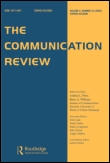
COMMUNICATION REVIEW
Fostering Knowledge in the Multifaceted World of CommunicationCOMMUNICATION REVIEW is a premier journal dedicated to the dynamic and multifaceted field of communication, published by Routledge Journals, Taylor & Francis Ltd. With both ISSN 1071-4421 and E-ISSN 1547-7487, this journal has established itself as a vital resource for researchers, professionals, and students interested in innovative theories, cutting-edge research, and critical analyses within the field. Boasting a respected Q1 quartile ranking in Communication for 2023, it operates within the top tier of its category, underscored by a strong Scopus rank of #119 out of 511, placing it in the 76th percentile among its peers. Although not an open-access publication, it provides essential insights and findings that contribute significantly to the academic discourse on communication, making it a crucial reference for anyone looking to deepen their understanding of the subject. Enthusiasts and scholars alike will find COMMUNICATION REVIEW an invaluable journal that encapsulates the evolution and breadth of communication studies throughout its publication years from 1995 to 2001 and from 2003 to 2024.
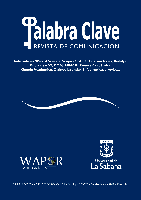
Palabra Clave
Connecting Scholars, Inspiring DiscoursePalabra Clave is a leading open-access journal published by the UNIV SABANA, FAC COMUNICACION in Colombia, dedicated to advancing the fields of Arts and Humanities as well as Communication. Since its inception in 2001, the journal has committed to providing a platform for innovative research and critical discourse, garnering an impressive Q2 classification in both respective fields. The journal is indexed in Scopus, with a commendable ranking of #26 out of 173 in Arts and Humanities, representing the 85th percentile, and #263 out of 511 in the Communication category, indicating its significant impact within the academic community. With its converged years from 2012 to 2024, Palabra Clave encourages scholars, professionals, and students to engage with contemporary issues through a lens of interdisciplinary scholarship. Accessible through its open-access model, this journal fosters the democratization of knowledge and aims to connect researchers across the globe.

Information Communication & Society
Fostering Discourse on the Dynamics of Information TechnologyInformation Communication & Society, published by Routledge Journals, Taylor & Francis Ltd, is a premier journal in the fields of communication and library and information sciences, boasting an impressive impact factor and consistently high rankings in Scopus, including Rank #18/511 in Communication and Rank #14/280 in Library and Information Sciences for 2023. With its focus on the dynamic interplay between information technology and society, the journal serves as a vital platform for researchers, professionals, and students, facilitating the discussion of contemporary issues that shape digital environments. Since its inception in 2001 and converging from 2005 to 2024, the journal has maintained a rigorous peer-review process to ensure that it publishes high-quality research that contributes to ongoing debates and developments in the digital age. Although it does not offer open access, the journal's esteemed reputation and Q1 categorization underscore its impact within the academic community, making it an essential resource for anyone interested in the evolution of communication in the modern world.

Communication & Society-Spain
Advancing Communication Research for a Dynamic SocietyCommunication & Society-Spain, published by Universidad de Navarra, is an esteemed open access journal dedicated to advancing scholarship in the dynamic fields of communication and cultural studies. Since its inception in 1988, the journal has maintained a commitment to disseminating high-quality research that engages with contemporary issues and contributes to the evolving discourse around communication theories and practices. With a commendable Q1 ranking in both Communication and Cultural Studies categories, it stands as a prominent source for researchers and professionals alike, reflecting its robust presence in the academic community—evidenced by its Scopus rankings placing it in the top percentiles within both fields. The journal's scope encompasses diverse perspectives and methodologies, thereby fostering interdisciplinary dialogue essential for understanding the complexities of communication in society. With a publication history that spans from 2010 to 2024 and a ranking of #87 out of 1304 in Cultural Studies, our commitment to open access ensures that impactful research is readily available to all, promoting further scholarly engagement and innovation.
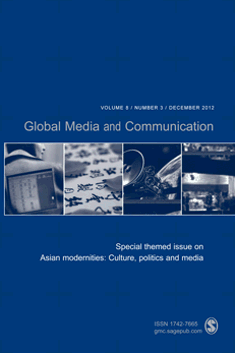
Global Media and Communication
Pioneering Scholarly Discourse in Global Media StudiesGlobal Media and Communication is a premier journal dedicated to advancing the fields of media and communication studies, published by SAGE Publications Ltd. With an ISSN of 1742-7665 and an E-ISSN of 1742-7673, this journal offers a platform for scholarly discourse and innovative research that explores the intricate relationships between global media practices and communication strategies. Recognized as a Q1 journal in both the Arts and Humanities (Miscellaneous) and Communication categories for 2023, it stands out in its commitment to delivering high-quality, peer-reviewed articles that contribute to the understanding of contemporary media landscapes. Located in London, United Kingdom, the journal benefits from being at the heart of cultural and digital innovation. Researchers, professionals, and students can look forward to insightful articles that not only critique existing frameworks but also propose new methodologies, ensuring that Global Media and Communication remains a vital resource for anyone interested in navigating the evolving dynamics of media and communication on a global scale.

Connectist-Istanbul University Journal of Communication Sciences
Empowering Research with Open Access KnowledgeConnectist-Istanbul University Journal of Communication Sciences is a distinguished academic publication under the auspices of Istanbul University, Faculty of Communication, dedicated to advancing the field of communication studies. Since its inception, this Open Access journal has facilitated the dissemination of groundbreaking research and innovative methodologies, particularly since it embraced an open access model in 2017, promoting wider accessibility and engagement. As a pivotal resource for researchers, practitioners, and students alike, Connectist fosters interdisciplinary dialogue, exploring contemporary issues in communication, media studies, and related disciplines. With a commitment to rigorous peer review and scholarly excellence, the journal serves as an essential platform for cutting-edge insights and developments in communication sciences, thereby contributing significantly to the academic community and beyond.
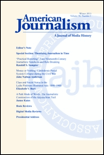
American Journalism
Examining the Multifaceted World of Journalism.American Journalism is a prominent peer-reviewed journal dedicated to advancing the field of communication, with a particular focus on the evolving landscapes of journalism practices and media studies. Published by Routledge Journals, Taylor & Francis Ltd, this journal serves as a critical platform for researchers, professionals, and students aiming to explore the multifaceted dimensions of journalism from 1983 to the present. While it currently holds an impact factor ranking within the Q4 category of communication disciplines, its commitment to publishing innovative research and fostering dialogue ensures it remains an integral resource for understanding contemporary media dynamics. With its address in the heart of the United Kingdom, the journal upholds a global perspective, engaging with diverse issues relevant to today's journalistic environment. Although it does not provide open access options, the journal offers access through various academic libraries and institutional subscriptions, making it a valuable asset for anyone invested in the future of journalism.

International Journal of Communication
Navigating the evolving landscape of communication.International Journal of Communication, published by USC Annenberg Press, is a premier open access journal dedicated to advancing the field of communication studies. Since its inception in 2007, the journal has provided a vital platform for researchers, professionals, and students to engage with cutting-edge research, theoretical frameworks, and empirical studies. With an impressive Q1 quartile ranking in Communication for 2023 and a notable Scopus rank of 156 out of 511 in the Social Sciences Communication category, the journal consistently contributes to high-quality scholarly discourse. It covers a wide array of topics, making it a crucial resource for those looking to stay informed about the latest developments in communication research. The journal's commitment to open access enhances its reach and impact, fostering a global community of academics and practitioners dedicated to exploring the complexities of communication in contemporary society. This makes the International Journal of Communication an essential read for anyone interested in understanding the dynamics of communication today.